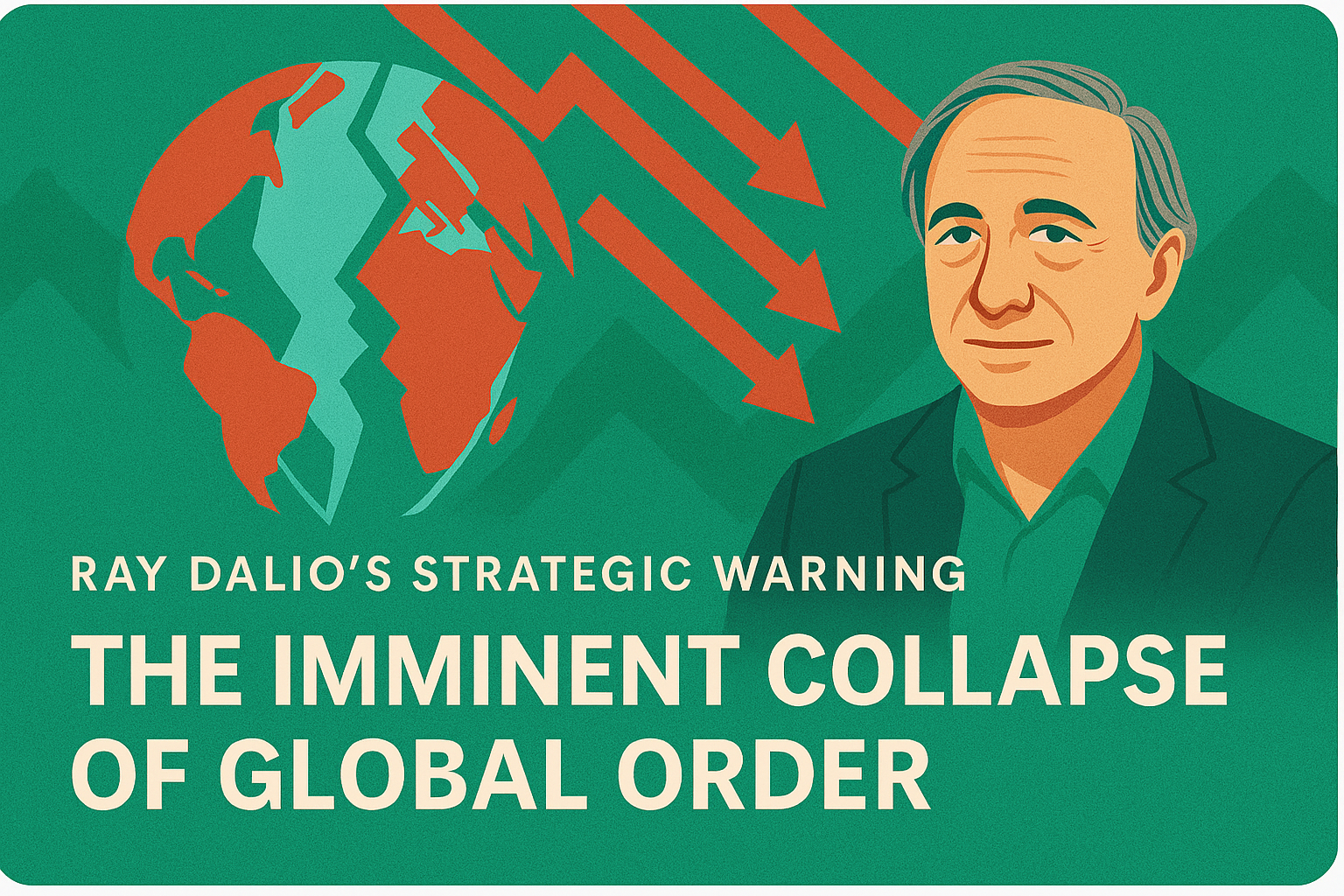The Imminent Collapse of Global Order
— Beyond Recession: A Multi-Layered Systemic Crisis in the Making —
I|Introduction: The Prelude to Collapse
Ray Dalio, founder of Bridgewater Associates, has issued a stark warning regarding the current global economic environment. According to him, what lies ahead is not a conventional economic downturn but a deep structural breakdown—akin to the 1930s systemic collapse.
He points to the convergence of three critical forces:
- Explosive debt and fiscal imbalances,
- Protectionist economic policies, and
- The disintegration of global order.
These forces, if left unchecked, could trigger a crisis that is not only financial but also geopolitical and institutional.
II|Core Risk Axes Identified by Dalio
A. The Breakdown of U.S. Fiscal Sustainability
- U.S. federal deficits now exceed 6% of GDP; national debt surpasses 130% of GDP.
- Dalio warns of a looming “financial heart attack” if deficits are not cut to under 3% of GDP.
- Rising interest payments on debt are crowding out productive investment, fueling long-term stagnation.
B. Trump’s Protectionist Trade Policies
- The new wave of tariffs (e.g., 50% on copper, 200% on pharmaceuticals) is described by Dalio as “throwing a wrench into the global production machine.”
- These measures damage global supply chains, spark inflation, and erode corporate confidence.
- They also accelerate the move toward economic blocs and fragmented trade zones.
C. The Collapse of International Order
- Dalio identifies a simultaneous erosion in:
- Financial order (currency trust and capital mobility),
- Domestic political order (institutional instability), and
- Geopolitical order (U.S.-China rivalry, regional wars).
- He likens the situation to the pre-WWII era, where unchecked divisions led to systemic global upheaval.
III|Three-Stage Breakdown Scenario
| Stage | Description | Implications |
|---|---|---|
| Stage 1 | Interest rate shocks and debt stress | Stagflation, credit crunch |
| Stage 2 | Collapse of currency trust | Capital flight, currency wars |
| Stage 3 | Institutional and geopolitical fragmentation | Political instability, potential armed conflict |
IV|Implications for Currency Markets
💱 U.S. Dollar Weakness and the End of Hegemony
- A Trump re-election and intensified sanctions may accelerate “de-dollarization”.
- Investors are shifting toward alternatives: euro, gold, renminbi, and digital currencies.
- Morgan Stanley projects EUR/USD reaching 1.25 by late 2025 if U.S. fiscal credibility deteriorates.
💸 Market Sentiment: Preparing for Regime Shift
- In the short term: heightened volatility as interest rates and central bank policies diverge.
- In the medium term: asset rotation away from U.S. Treasuries toward euro-denominated and neutral instruments.
- In the long term: increased demand for currencies backed by institutional trust (e.g., CHF, EUR, gold).
V|Policy Recommendations from Dalio (with Analyst Addendum)
Dalio’s Prescriptions
- Aggressive fiscal restructuring, especially in the U.S.
- Rebuilding rules-based global trade, avoiding economic bloc fragmentation.
- Restoring central bank independence and credibility amid rising political interference.
Analyst Supplement
- Investors should prioritize risk diversification—geopolitical, monetary, and institutional.
- Policymakers must learn from history’s “rhymes” and embrace coordinated, proactive frameworks for reform.
VI|Conclusion: Orderly Transition or Shock Collapse?
Ray Dalio’s insights go far beyond economic analysis—they are a strategic warning on the future of institutional civilization itself. What we’re witnessing is the slow unraveling of a postwar order that has relied on trust, cooperation, and fiscal restraint.
The future will be shaped not by fate, but by the quality of decisions made today.
“History shows that those who adapt to structural transitions thrive. Those who ignore them perish.”
— Ray Dalio
Now is the moment to take that history seriously.


